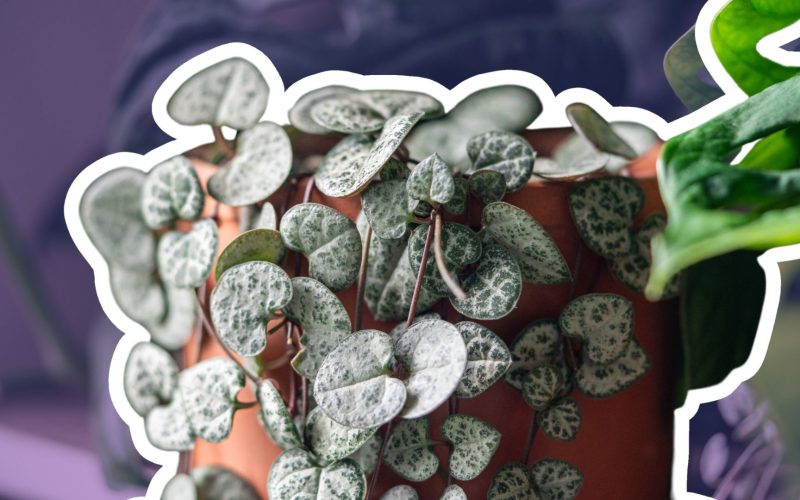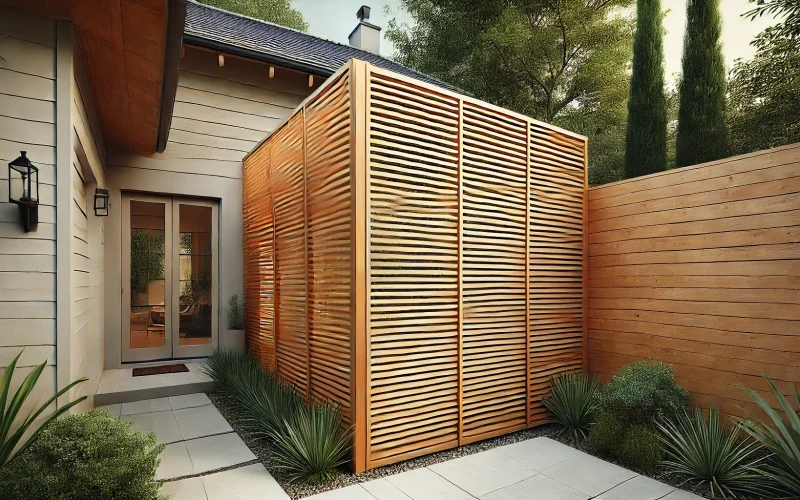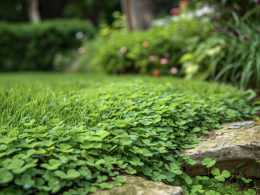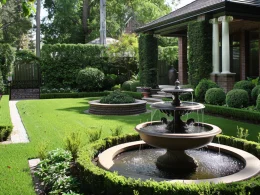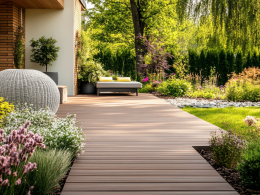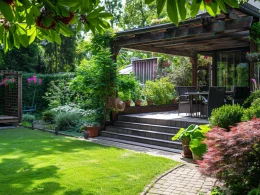Caring for houseplants can be tricky, especially when you’re new. The String of Hearts plant might initially seem challenging with its delicate vines and heart-shaped leaves.
But don’t worry! This plant is quite easy to grow and maintain. In this guide, I’ll show you how to care for your String of Hearts plant like a pro.
You’ll learn about its light and water needs, soil preferences, and even how to propagate it.
By the end of this post, you’ll have all the knowledge you need to help your String of Hearts thrive and become a beautiful addition to your home.
Understanding the String of Hearts

The String of Hearts, also known as Ceropegia woodii, is a charming plant that’s hard to resist. Its small, heart-shaped leaves dangle from thin, delicate vines, creating a cascade of green hearts. These vines can grow quite long, often reaching several feet in length.
One unique feature of this plant is the white, ball-shaped tubers that sometimes form along the vines. These tubers give the plant its alternate name, the rosary vine. The plant’s growth habit is fast and vigorous, making it a joy to watch as it spreads and fills its pot.
String of Hearts is known for being low-maintenance and easy to care for. It’s a great choice for both new and experienced plant owners. The plant’s ability to grow quickly and its ease of propagation make it a favorite among those who enjoy sharing plants with friends or expanding their collection.
Essential Care Tips for The Strings of Hearts
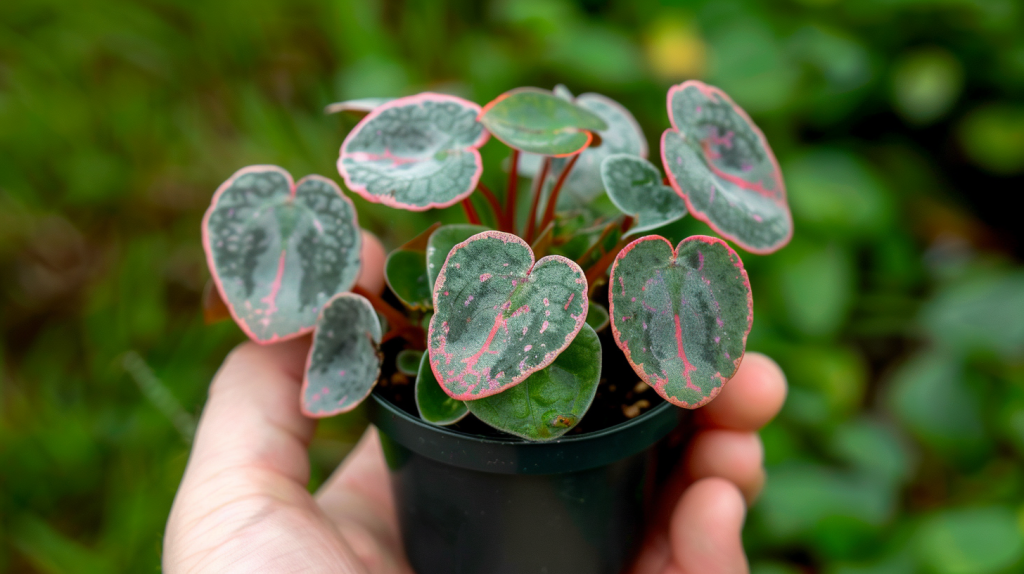
1. Light Requirements
String of Hearts thrives in bright light conditions. This plant can handle quite a lot of light and even enjoys direct sun.
- Place your String of Hearts near a southwest-facing window for the best growth. This spot typically provides the right balance of bright, indirect light with a touch of direct sunlight.
- During winter, when daylight hours are shorter, your String of Hearts might benefit from extra light, so using a grow light can extend the hours of light exposure.
2. Watering Guidelines
Knowing when to water your String of Hearts is easy once you know what to look for. The plant itself will give you clear signals about its water needs.
- Check the leaves near the plant’s crown. If they’re plump and full, like little juicy berries, your plant doesn’t need water yet.
- However, if these leaves appear flat or feel squishy, and the soil is dry, it’s time to give your plant a drink.
- When watering, do it thoroughly. Pour water until it runs out of the drainage holes at the bottom of the pot, ensuring that water reaches all parts of the soil.
- After watering, empty any water collected in the saucer or cache pot. String of Hearts doesn’t like to sit in water, which can lead to root rot.
- You might need to adjust your watering routine during winter. If your plant gets less light, it will use less water.
- Always check the soil and leaves before watering to avoid overwatering.
3. Soil and Potting
The right soil mix is key to keeping your String of Hearts happy and healthy. This plant needs well-draining soil that allows excess water to flow quickly.
- A good blend for String of Hearts combines regular potting soil with cactus soil.
- To boost drainage even more, add some extra perlite to the mix.
- When choosing a pot, Terra cotta is an excellent option for String of Hearts.
- These pots are breathable, which helps prevent water from sitting in the soil for too long.
- The porous nature of terra cotta also allows excess moisture to evaporate, reducing the risk of root rot.
4. Humidity and Fertilizing
Good news for plant owners: String of Hearts is not fussy about humidity. It does well in standard household humidity levels, making it a great choice for most homes.
- A little goes a long way when feeding your String of Hearts.
- During the growing season, typically spring and summer, you can use a general houseplant fertilizer or a succulent fertilizer.
- Apply it every few weeks to give your plant the nutrients it needs for healthy growth.
- Your String of Hearts might slow growth in winter, especially if you live in an area with shorter daylight hours. In this case, you can stop fertilizing altogether.
- However, if you live somewhere where your plant grows throughout winter, you might want to continue fertilizing, but less frequently.
Troubleshooting Common Problems
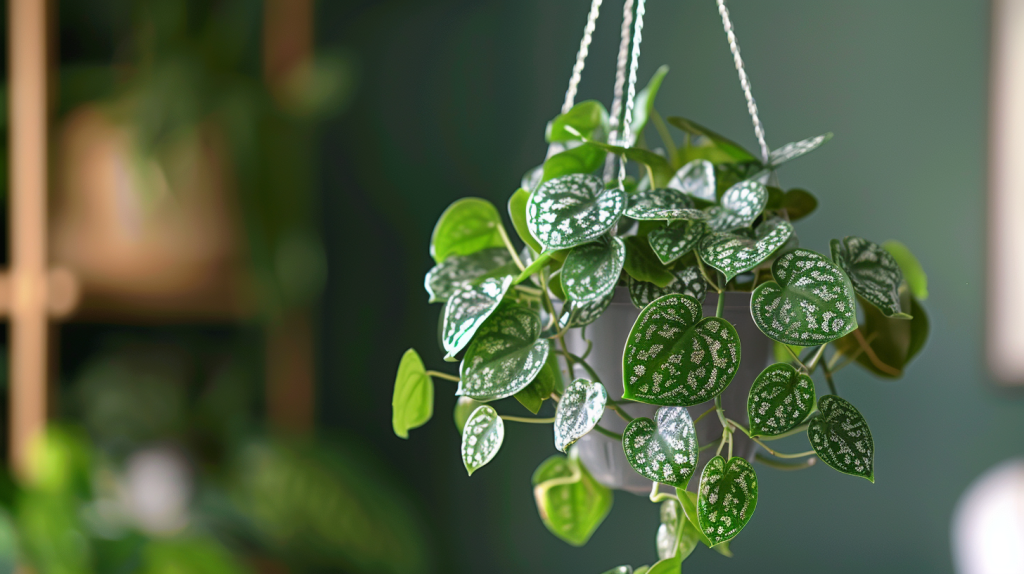
1. Dropping Leaves
While String of Hearts is generally hardy, you might occasionally notice leaves dropping. This can be alarming, but it’s often easy to fix once you identify the cause.
- Cause: The most common cause of leaf drop is watering issues. Overwatering can cause root damage, making it difficult for the plant to take up water. As a result, leaves may drop as the plant can’t keep them hydrated. On the flip side, underwatering can also cause leaf drop. If the soil stays dry for too long, the plant might shed leaves to conserve water.
- Solution: To solve this issue, start by checking your watering routine. Feel the soil – you’re probably overwatering if it’s consistently wet. Let the soil dry out more between waterings. If the soil is bone dry and the plant looks shriveled, it needs more frequent watering. In cases of severe overwatering, you might need to check the roots. Gently remove the plant from its pot and look at the roots. Healthy roots should be firm and white or light-colored. If you see dark, mushy roots, trim these away with clean scissors and repot the plant in fresh, well-draining soil.
2. Sparse Growth
Sometimes, you might notice your String of Hearts growing more vines than leaves, resulting in sparse, leggy strings. This is usually a sign that your plant isn’t getting enough light.
- Cause: String of Hearts needs plenty of bright light to grow full, lush vines with many leaves. When there is insufficient light, the plant stretches out, growing longer vines for more light. This results in fewer leaves and greater spaces between leaf pairs.
- Solution: Try moving your plant to a brighter spot to fix this issue. A location near a south—or west-facing window often works well. Remember, String of Hearts can handle some direct sunlight, so don’t be afraid to give it more light. During winter, when daylight hours are shorter, your plant might struggle with the reduced light. This is where grow lights can be a game-changer. Setting up a grow light to supplement natural light can help your String of Hearts maintain healthy growth even during darker months.
3. Balding on Top
A common issue with String of Hearts plants is “balding” atop the pot. This happens when the top of the plant loses leaves, leaving bare stems while the hanging vines remain full and leafy.
- Cause: The main cause of this problem is the lack of light reaching the top of the plant. This often occurs when the plant is hung too high, or the pot is too deep, shading the top growth from light.
- Solution: To solve this issue, make sure the top of your String of Hearts receives enough light. If it’s hanging, consider lowering it slightly so the top is closer to the light source. You might need to raise the soil level for plants in deep pots, bringing the top growth above the pot’s rim. If your plant has already become bare on top, don’t worry – you can easily fix this through propagation.
Propagation Methods for The Strings of Hearts
1. Water Propagation
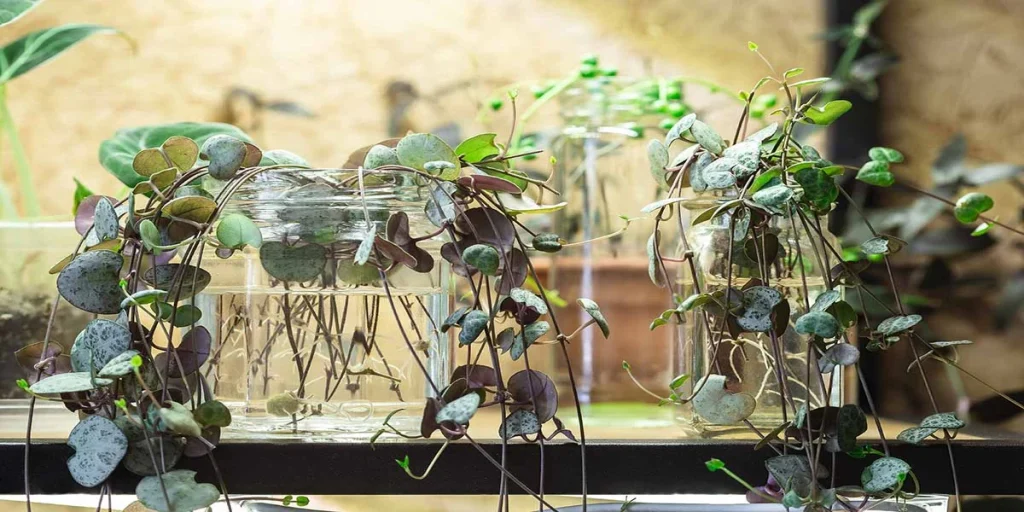
Water propagation is a simple and fun way to create new String of Hearts plants. Here’s how to do it:
- Cut a few healthy strings from your plant. Ensure each cutting has at least 2-3 nodes (the points where leaves grow).
- Remove the leaves closest to the cut end, leaving about an inch of bare stem.
- Place these cuttings in a container of clean water. Ensure the nodes are submerged, but keep any remaining leaves above the water line.
- Put the container in a bright spot but out of direct sunlight.
- Wait patiently for roots to form. This usually takes about 3-4 weeks.
- Once the roots are 2-3 inches long, your cuttings are ready to be planted in the soil.
- Remember to change the water once a week to keep it fresh and oxygenated. This helps prevent rot and encourages healthy root growth.
- When planting your rooted cuttings, use a well-draining soil mix.
- For the first couple of weeks, keep the soil slightly more moist than you normally would for an established String of Hearts.
2. Butterfly Method
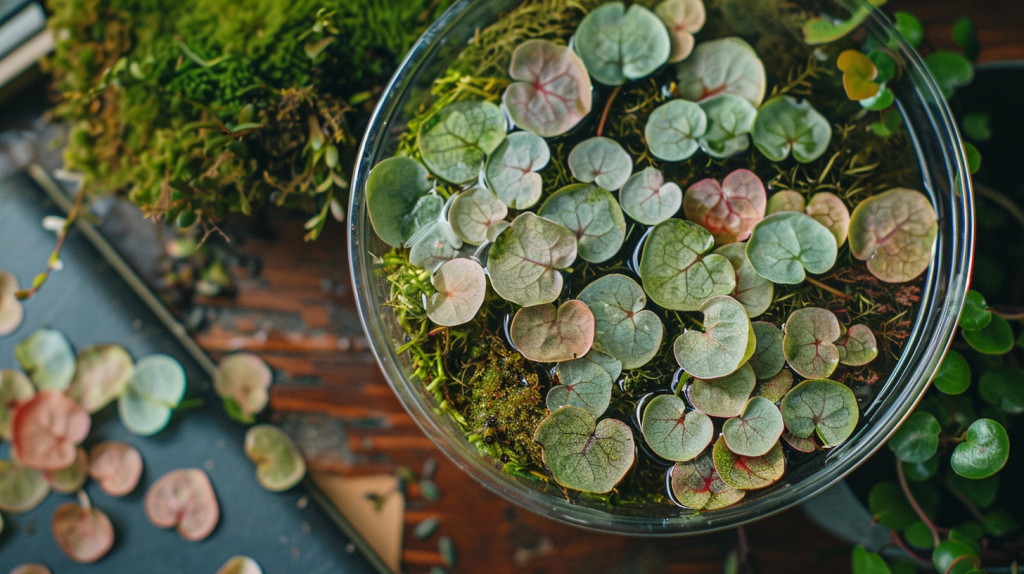
The butterfly method is an effective way to create a full, lush String of Hearts plant. Here’s how to do it:
- Cut your String of Hearts vines into small sections, each with a pair of leaves and a node.
- Prepare a pot with well-draining, slightly moist soil.
- Lay these cuttings on the soil surface, with the node touching the soil. The leaves should stick up like butterfly wings, hence the name.
- Gently press the nodes into the soil to ensure good contact.
- Place the pot in a clear plastic bag and seal it. This creates a humid environment that encourages rooting.
- Put the bagged pot in a bright spot, but avoid direct sunlight to prevent overheating.
- Open the bag every few days to allow fresh air in and prevent mold growth.
- Mist the soil if it starts to dry out, but avoid making it too wet.
- After a few weeks, you should see new growth, indicating that roots have formed.
3. Tuber Method
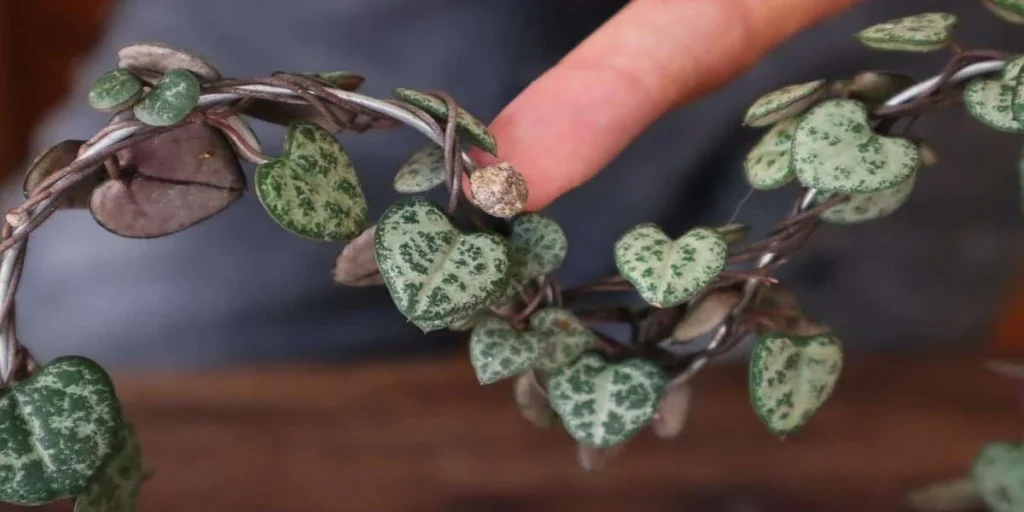
String of Hearts plants sometimes develop small, round tubers along their vines. These tubers aren’t just interesting features but also a great way to propagate your plant. Here’s how to use them:
- Look for healthy tubers on your plant. They should be firm and at least the size of a pea.
- Gently remove the tuber from the vine. If it’s attached to a section of vine, that’s fine – you can leave it connected.
- Prepare a small pot with a well-draining soil mix. The same blend you use for mature plants works well.
- Place the tuber on the soil surface. You can coil the vine on top of the soil if it’s still attached to a vine.
- Lightly press the tuber into the soil, ensuring it has good contact, and don’t bury it completely.
- Water lightly and place the pot in a warm, bright spot without direct sunlight.
- Keep the soil slightly moist but not soggy.
- Over time, the tuber will develop roots and produce new growth.
Conclusion
Taking care of a String of Hearts plant can be a rewarding experience. This charming plant will thrive and grow into a beautiful cascading display with the right light, water, and soil.
Check the leaves for watering cues, provide bright light, and use well-draining soil. If you encounter issues like leaf drop or sparse growth, don’t worry – with a few adjustments, you can get your plant back on track.
Whether you’re a beginner or an experienced plant parent, the String of Hearts will surely steal your heart with its easy-going nature and stunning appearance.
Why not give it a try? Your home will thank you for the touch of green beauty.





